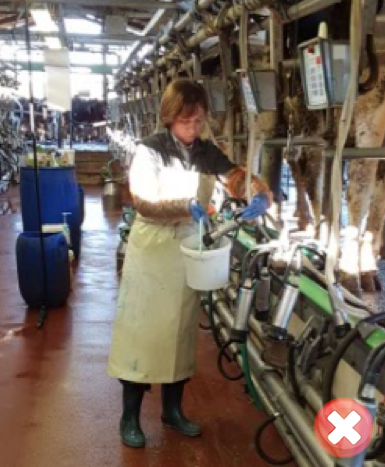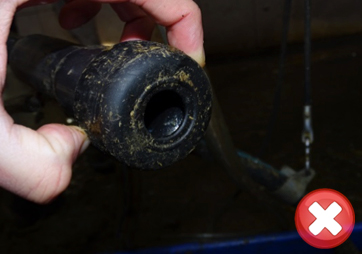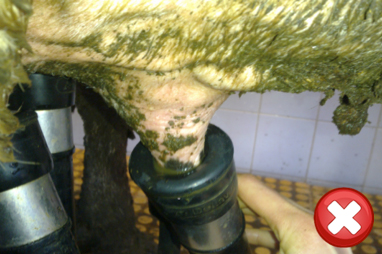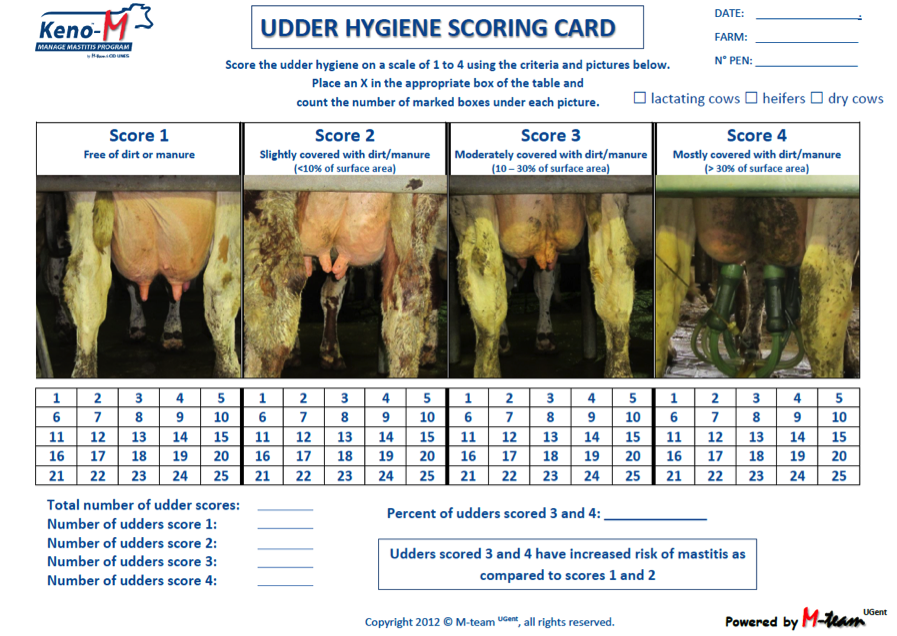
Without optimal cleaning and disinfection protocols, teat liners are one of the main vectors to spread mastitis causing bacteria on a dairy farm.
-
Bacteria from an infected quarter can colonize the teat liner. This liner becomes a source of bacteria for the animals milked afterwards. A research has shown that Staph aureus deposited in a liner could infect the 8 next cows that are milked with this liner. (How to Control Somatic Cell Counts, Peter Edmondson, p39).
Some tips to avoid bacteria transmission during milking:
> Establish a milking order, for example:
1) Fresh cows/ 2) First lactation cows/ 3) 2nde and more lactations/ and 4) infected/ treated animals
1) fresh cows/ 2) High productive cows/ 3) Low productive cows/ and finally 4) infected / treated animals
> If this is difficult to manage, opt for a cluster disinfection after infected animals. Different possibilities exists: dip the cluster in a bucket with disinfectant , spray the disinfectant into the cluster, install an automatic backflush system, …

Although it exists different way to disinfect cluster after infected animals, it is not recommended to use the “bucket method”. Indeed, dipping different clusters in the same bucket increase the solution contamination, reducing its disinfecting power.
> It is also essential to regularly replace the teat liners.
-
The shelf-life of rubber liners is around 2500 milkings. After that, the rubber loses its elasticity, the milking becomes less efficient and some teat lesions can appear. At a microscopic level, cracks appear, which allows bacteria to be colonizing the teat liner surface.
-
The shelf-life of silicon liners is estimated at 8000 milkings. Over that number, silicon becomes porous and bacteria can hide and multiply inside.
-
The cluster is also contaminated by environmental bacteria when udder and teats are not prepared properly before milking. The dirt that is not removed before milking ends up in the milking machine and in the milk. Teat preparation and barn management is also essential in order to keep the milking equipment as clean as possible.


Photo: Courtesy of DVM Josephine Verhaeghe, dairy technical support, CID LINES
How to assess the cleanliness of the barn? Use the following scoring chart. More than 20% of score 3 and 4 increases the risk for environmental mastitis and milking machine contamination.
